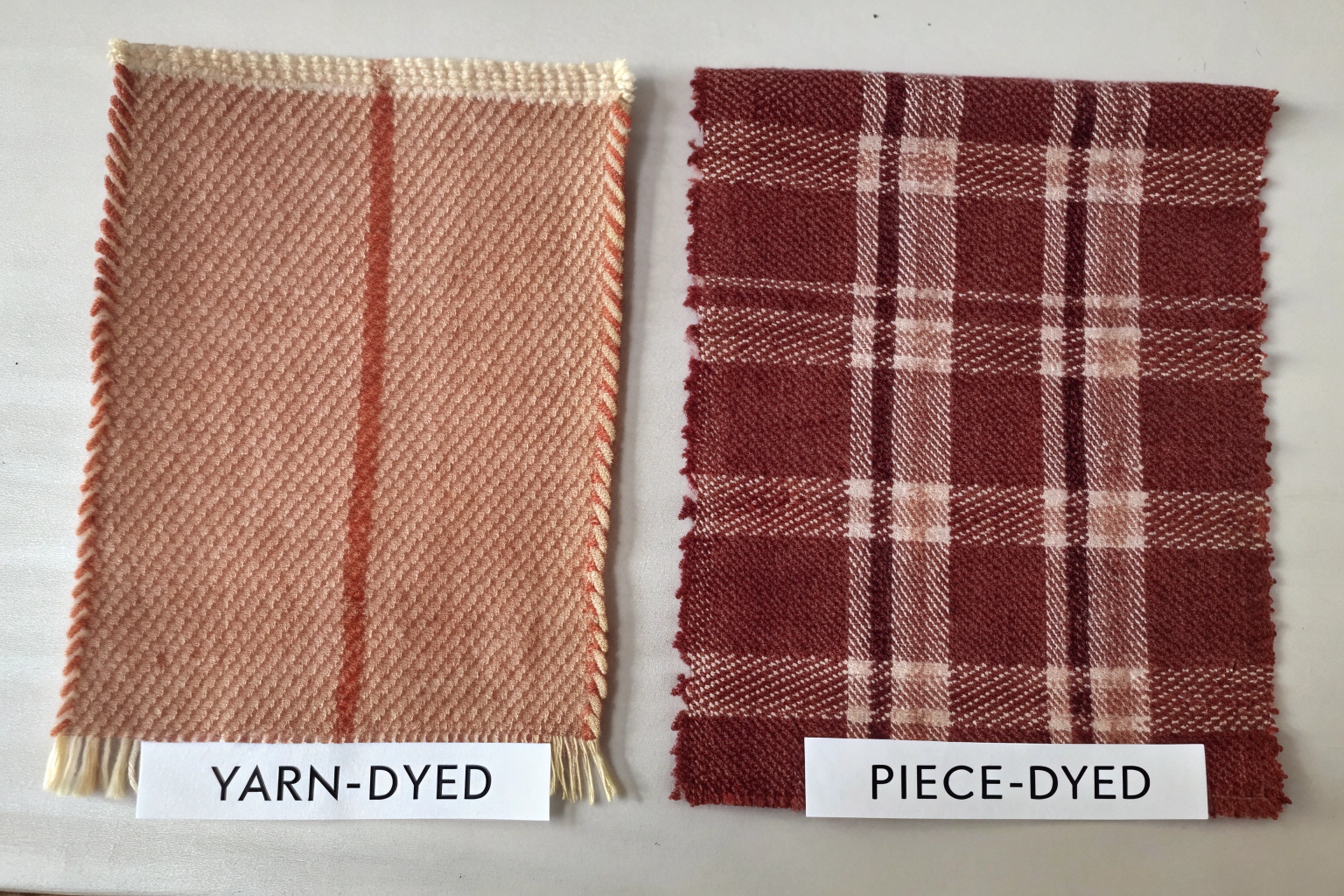If you're sourcing fabrics for your fashion line, you've likely encountered the terms "yarn-dyed" and "piece-dyed." Understanding this fundamental difference is not just a technicality—it's a critical decision that impacts your fabric's aesthetics, quality, cost, and lead time. Choosing the wrong dyeing method can lead to unexpected color variations, higher costs, and production delays. As a fabric manufacturer with over two decades of experience, I'll demystify these processes for you.
So, what exactly is the difference? Yarn-dyed fabric involves dyeing the threads before they are woven or knitted into cloth. Piece-dyed fabric, conversely, is produced by weaving or knitting the fabric first and then dyeing the entire piece of cloth in one go. This core difference in sequence dictates everything from the fabric's appearance to its production timeline.
This choice is one of the first we guide our clients through at Fumao Textiles. Let's dive deeper into each method so you can make an informed decision for your next collection.
What is yarn-dyed fabric?
Yarn-dying is the premium choice for patterns and longevity. Imagine coloring individual spools of thread before they are even placed on the loom. This is the essence of yarn-dying. The dyed yarns are then woven or knitted together to create patterns like stripes, checks, and plaids. Because the color penetrates the core of the fiber, these fabrics are known for superior color fastness.
The most significant advantage of yarn-dyed fabric is its complex and clear patterns. Think of a classic Oxford shirt with its crisp, white and colored yarns interwoven, or a sophisticated jacquard with an intricate design. These patterns are integral to the fabric's structure, making them durable and resistant to fading. Common examples include chambray, gingham, seersucker, and denim. The iconic white selvage on denim jeans is a telltale sign of a yarn-dyed fabric.
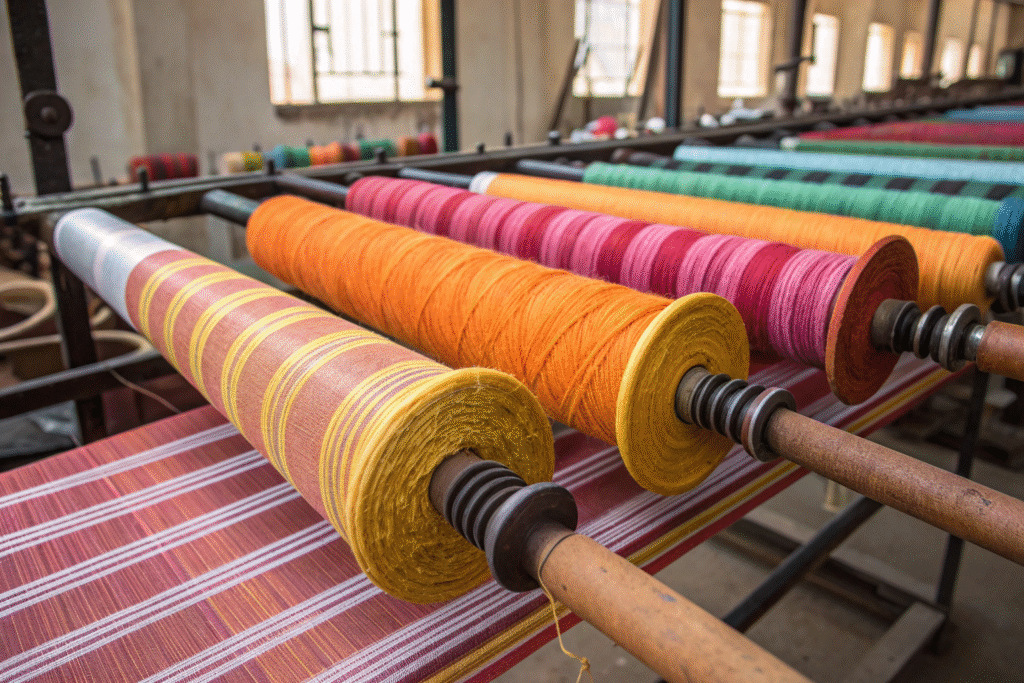
Why choose yarn-dyed for patterned designs?
You should choose yarn-dyed fabric when your design relies on sharp, multi-colored patterns. The color separation is much cleaner and more defined compared to printing a pattern on piece-dyed cloth. The colors are woven into the fabric's identity, resulting in a richer, more textured hand-feel. This method is ideal for creating timeless, high-quality garments like dress shirts, traditional shirting, and high-fashion items where the pattern is a key selling point. Furthermore, because the yarns are dyed beforehand, the final fabric is often more colorfast, meaning it can withstand frequent washing and wearing without the colors bleeding or fading significantly. For brands focusing on durability and a premium perception, yarn-dyed is often the undisputed champion.
What are the limitations of yarn-dyed fabric?
The main limitations of yarn-dyed fabric are cost and lead time. The process is inherently more complex and involves more stages—dyeing the yarns, letting them dry, and then weaving them precisely according to a pattern. This requires more sophisticated machinery and meticulous inventory management of different colored yarns. It also creates a higher minimum order quantity (MOQ), as running the looms for small, custom patterns is not cost-effective. Additionally, making color changes is a slow and expensive process. If you want to offer the same striped shirt in five different colorways, each one requires a separate and extensive production run from the yarn-dyeing stage onward. This lack of agility can be a challenge for fast-fashion brands that need to react quickly to trend shifts.
What is piece-dyed fabric?
Piece-dyeing is the go-to method for efficiency and solid colors. In this process, the entire fabric is constructed first using neutral, undyed (greige) yarns. The large roll of finished, plain fabric is then submerged into a massive dyeing vat, coloring it uniformly in a single shade. This is the most common and economical dyeing method used in the textile industry today.
The primary benefit of piece-dyeing is its incredible flexibility and speed. A factory can produce vast quantities of the same greige fabric and then dye portions of it to order based on market demand. This allows for much lower minimum order quantities and a faster response time. If a particular color, say "coral pink," becomes a viral trend, a manufacturer can dye existing greige stock and have it ready for shipment in a fraction of the time it would take for a yarn-dyed equivalent. Most of the solid-colored jersey, poplin, and satin you encounter are piece-dyed.
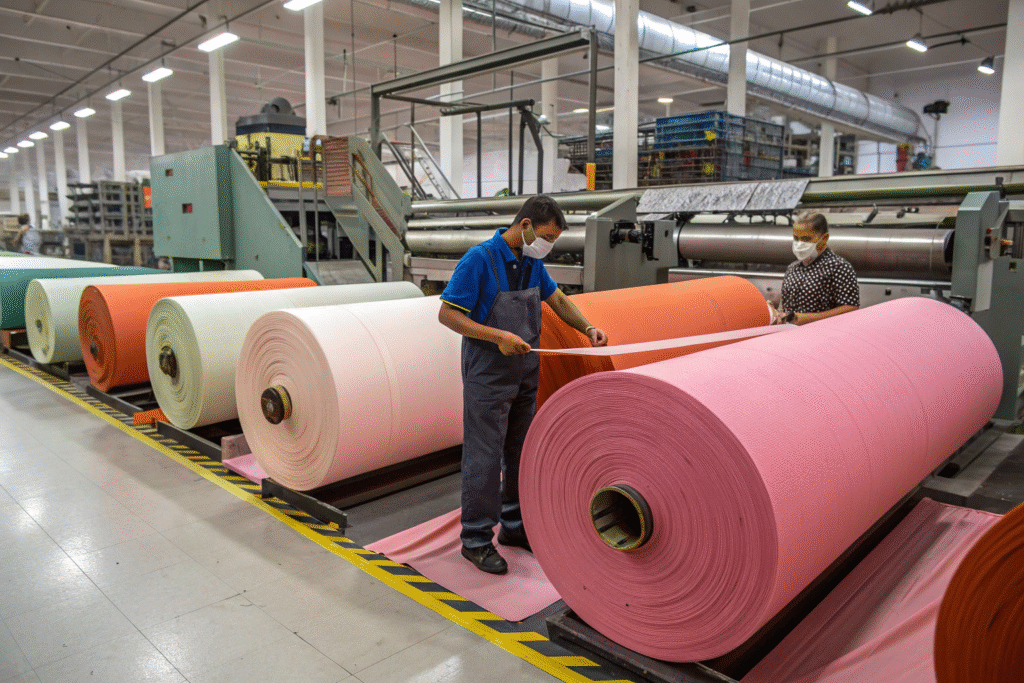
When is piece-dyeing the most cost-effective?
Piece-dyeing is the most cost-effective choice for solid colors and large-volume orders. The entire process is streamlined, reducing both labor and machine setup costs. Manufacturers can purchase greige goods in bulk, achieving a better price from weaving mills. The dyeing process itself, while consuming a lot of water and energy, is highly optimized for mass production. This efficiency translates directly into a lower price per meter for you. It also allows for unparalleled flexibility in color matching. If a client provides a specific Pantone shade, it's relatively simple to adjust the dye formula and run a sample lot. This makes piece-dyeing ideal for basic apparel, uniforms, and fast-fashion items where cost and speed-to-market are the primary drivers.
How does piece-dyeing impact color consistency?
While efficient, piece-dyeing can sometimes present challenges with color consistency both within a batch and between different batches. Factors like the fabric's original absorbency, the dye bath temperature, and circulation can lead to minor shade variations across a single piece of cloth. More notably, achieving an exact color match from one production run to the next can be difficult. A "navy blue" dyed in March might have a slightly different tone than the "navy blue" dyed in October. This is why working with a supplier that has a CNAS-accredited lab for rigorous quality control is crucial. At our facility, we use advanced software and spectrophotometers to ensure that our piece-dyed fabrics maintain a 98% consistency rate, batch after batch, giving our clients peace of mind.
Yarn-dyed vs piece-dyed: which is better for your project?
The decision isn't about which method is universally better, but which is better for your specific project. Your choice should be guided by your design goals, budget, timeline, and volume needs. The core trade-off is between the premium quality and intricate patterns of yarn-dyed fabric and the cost-effectiveness and flexibility of piece-dyed fabric.
To make the right choice, you need to weigh several key factors. The table below provides a quick, at-a-glance comparison to help you start your evaluation.
| Feature | Yarn-Dyed Fabric | Piece-Dyed Fabric |
|---|---|---|
| Pattern Complexity | Excellent for stripes, checks, jacquards | Limited to solid colors (patterns must be printed later) |
| Color Fastness | Generally superior, colors are locked in | Good, but can be prone to fading over time |
| Cost | Higher | Lower |
| Lead Time | Longer | Shorter |
| MOQ Flexibility | Lower flexibility, higher MOQs | Higher flexibility, lower MOQs |
| Best For | High-end shirting, fashion, durable patterns | Basics, fast-fashion, large-volume solid colors |
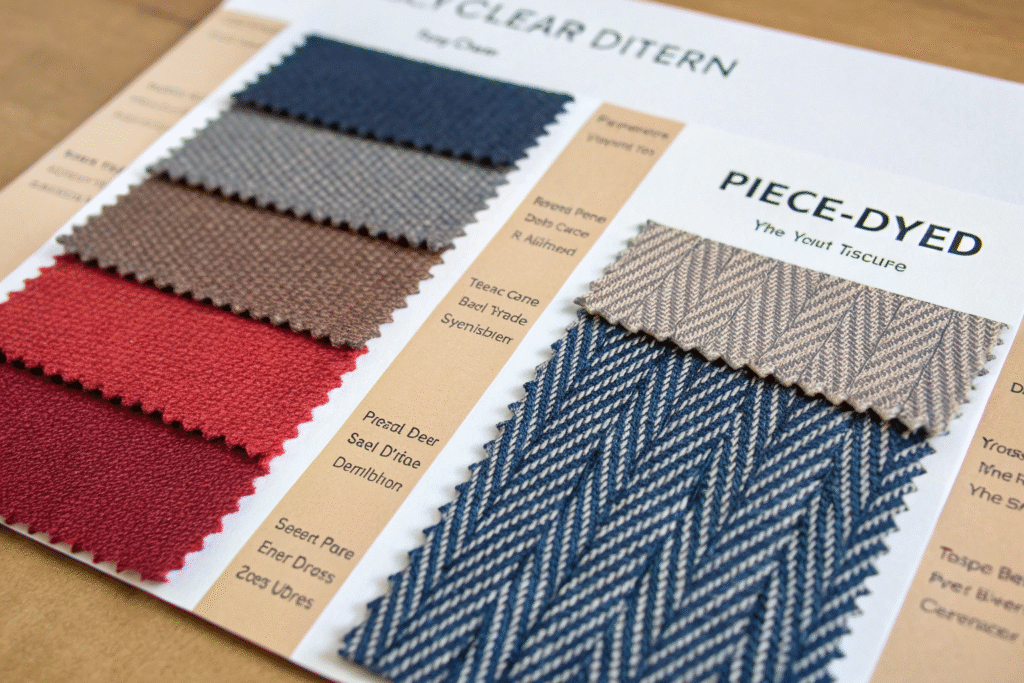
How do design needs influence your choice?
Your design needs are the most important factor. If your vision includes woven-in patterns like stripes, plaids, or intricate jacquards, then yarn-dyed is your only viable option. This method gives the pattern a depth and durability that printing cannot replicate. The reverse side of a yarn-dyed fabric will also show a muted or negative of the pattern, which is a sign of quality. Conversely, if your design is a solid color or relies on a surface print (like a graphic tee), then piece-dyeing is the logical and economical foundation. You can achieve a perfect, uniform base color onto which any design can be printed. For brands focusing on activewear or underwear, where solid colors and a soft hand-feel are paramount, piece-dyed fabrics are typically the standard.
What are the cost and timeline implications?
The cost and timeline implications are significant. A yarn-dyed fabric project requires a longer lead time—often adding several weeks to your production schedule due to the multi-stage process. The cost is also higher due to the complexity and inventory requirements. A piece-dyed project, especially for standard fabrics, can be turned around much faster. Our company, for instance, offers a 48-hour sampling service for piece-dyeing, allowing for rapid prototyping. The cost savings on piece-dyed goods can be substantial, often 15-30% lower than a comparable yarn-dyed fabric. This budget can then be reallocated to other aspects of your product, such as marketing or more elaborate garment construction. For startups and e-commerce brands watching cash flow, this can be a decisive factor.
How does Fumao Textiles master both dyeing techniques?
At Fumao Textiles, we don't just offer both techniques—we have perfected them to provide our clients with a seamless, end-to-end solution. Our roots in the Keqiao textile cluster give us direct access to specialized partners for every stage, from spinning and dyeing to weaving and finishing. This integrated supply chain allows us to control quality and efficiency, whether you need a small batch of custom yarn-dyed jacquard or 10,000 meters of piece-dyed cotton poplin.
Our capability is rooted in deep expertise and stringent quality control. For yarn-dyed projects, our R&D team works closely with clients to select the right yarns and perfect the color combinations before a single thread is woven. For piece-dyed orders, our CNAS-accredited testing lab ensures that every batch meets international colorfastness and shrinkage standards, like those from SGS. We leverage AI-driven trend analysis to keep a vast stock of popular greige goods, enabling us to offer surprisingly quick turnaround times on piece-dyed fabrics without compromising on quality.
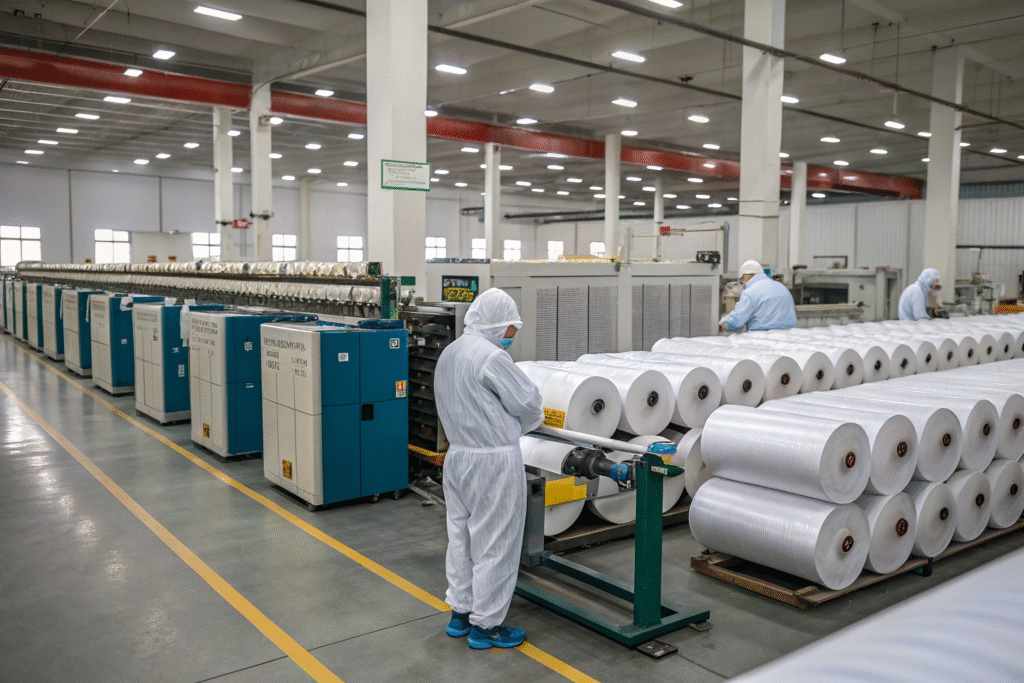
What is our process for custom yarn-dyed orders?
Our process for custom yarn-dyed orders is collaborative and meticulous. It begins with your design concept. Our technical team helps translate your pattern into a feasible weave structure. We then proceed to create lab dips, where we dye small yarn samples to match your exact color specifications for your approval. Once you sign off, the yarns are dyed in bulk, dried, and carefully arranged on the loom. Throughout the weaving process, our quality control team conducts regular checks to ensure the pattern alignment and density are perfect. This end-to-end control, from our own large-scale weaving factory to final inspection, is what allows us to deliver complex, high-quality yarn-dyed fabrics that consistently meet our clients' expectations for brands like ZARA and H&M.
How do we ensure speed and quality in piece-dyeing?
We ensure speed and quality in our piece-dyeing operations through technology and strategic partnerships. Our AI-driven systems analyze order history and market trends to pre-position greige fabric in our warehouse, ready for rapid dyeing. Our cooperative dyeing factories are equipped with state-of-the-art, automated dyeing machines that ensure even color penetration and reduce water and energy consumption. Most importantly, every meter of fabric that leaves our facility is tested in our own lab. We provide real-time access to composition and colorfastness data via QR code tracking. This system guarantees that you receive fabric that is not only delivered quickly but also performs reliably, batch after batch, saving you from costly quality issues down the line.
Conclusion
Choosing between yarn-dyed and piece-dyed fabric fundamentally shapes the look, feel, cost, and timeline of your fashion line. Yarn-dyed fabrics offer unparalleled pattern integrity and durability for premium applications, while piece-dyed fabrics provide cost-effectiveness, flexibility, and speed for solid-color projects. There is no single "best" option—only the best option for your specific design and business needs. Understanding this critical distinction empowers you to make smarter sourcing decisions and create better products.
If you're ready to move forward with your next fabric order and want a partner who can expertly guide you through these choices, let's talk. We at Fumao Textiles are here to co-create value with you, ensuring you get the right fabric, right on time. For a direct conversation about your project, please contact our Business Director, Elaine, at elaine@fumaoclothing.com. We look forward to helping you weave your vision into reality.

